Detailed Analysis of Environmental Impact Assessment (EIA) Procedures
VerifiedAdded on 2022/09/06
|23
|2235
|13
Report
AI Summary
This report provides a comprehensive overview of Environmental Impact Assessment (EIA). It begins by exploring the origin of EIA, tracing its development from early industrial concerns to its formalization through international conventions and legislation. The report emphasizes the importance of EIA as a policy and management tool, highlighting its role in identifying, predicting, and evaluating environmental consequences. It delves into the objectives of EIA, both immediate and long-term, and outlines the various benefits, including improved project design, compliance with environmental standards, and cost savings. The report then outlines the core values and guiding principles of EIA, emphasizing integrity, utility, and sustainability. A detailed examination of the EIA process follows, including screening, scoping, initial environmental examination (IEE), detailed EIA, reporting, review, decision-making, and implementation with follow-up. Each step is explained, highlighting the key activities and outcomes. The report concludes by illustrating the generalized EIA process flowchart, providing a visual guide to the entire process. The report serves as a valuable resource for understanding and implementing EIA for sustainable development.
1 out of 23
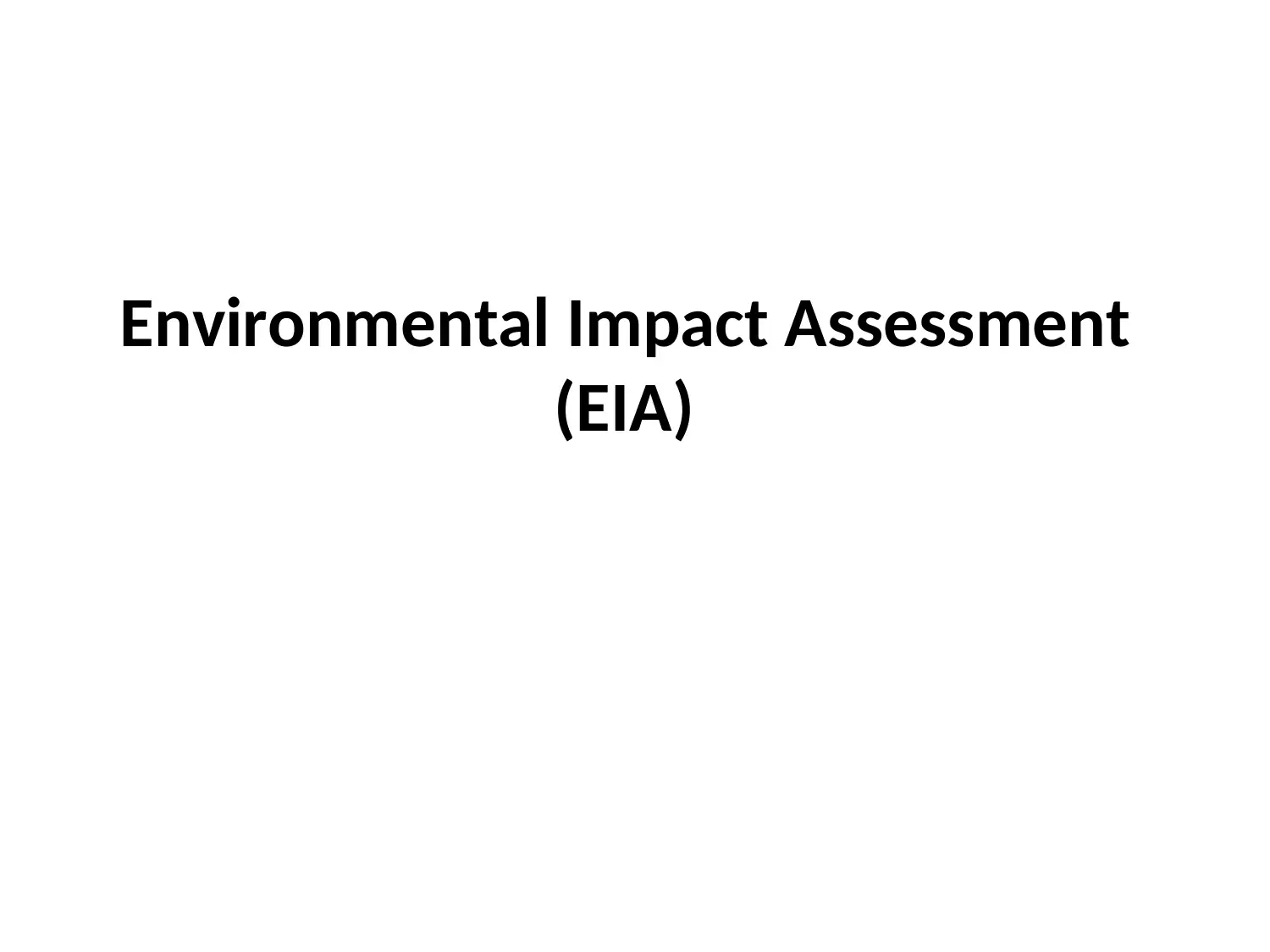
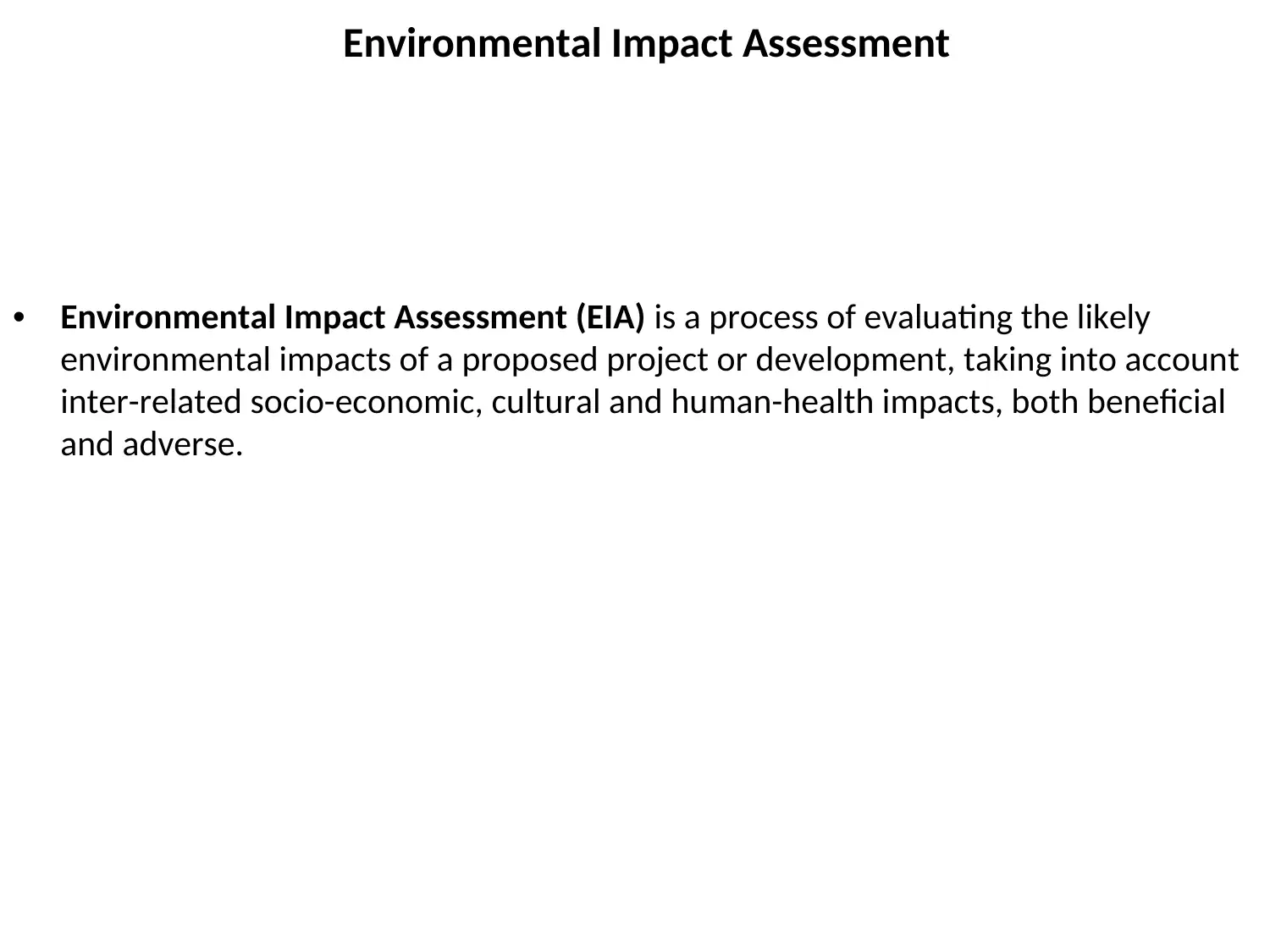
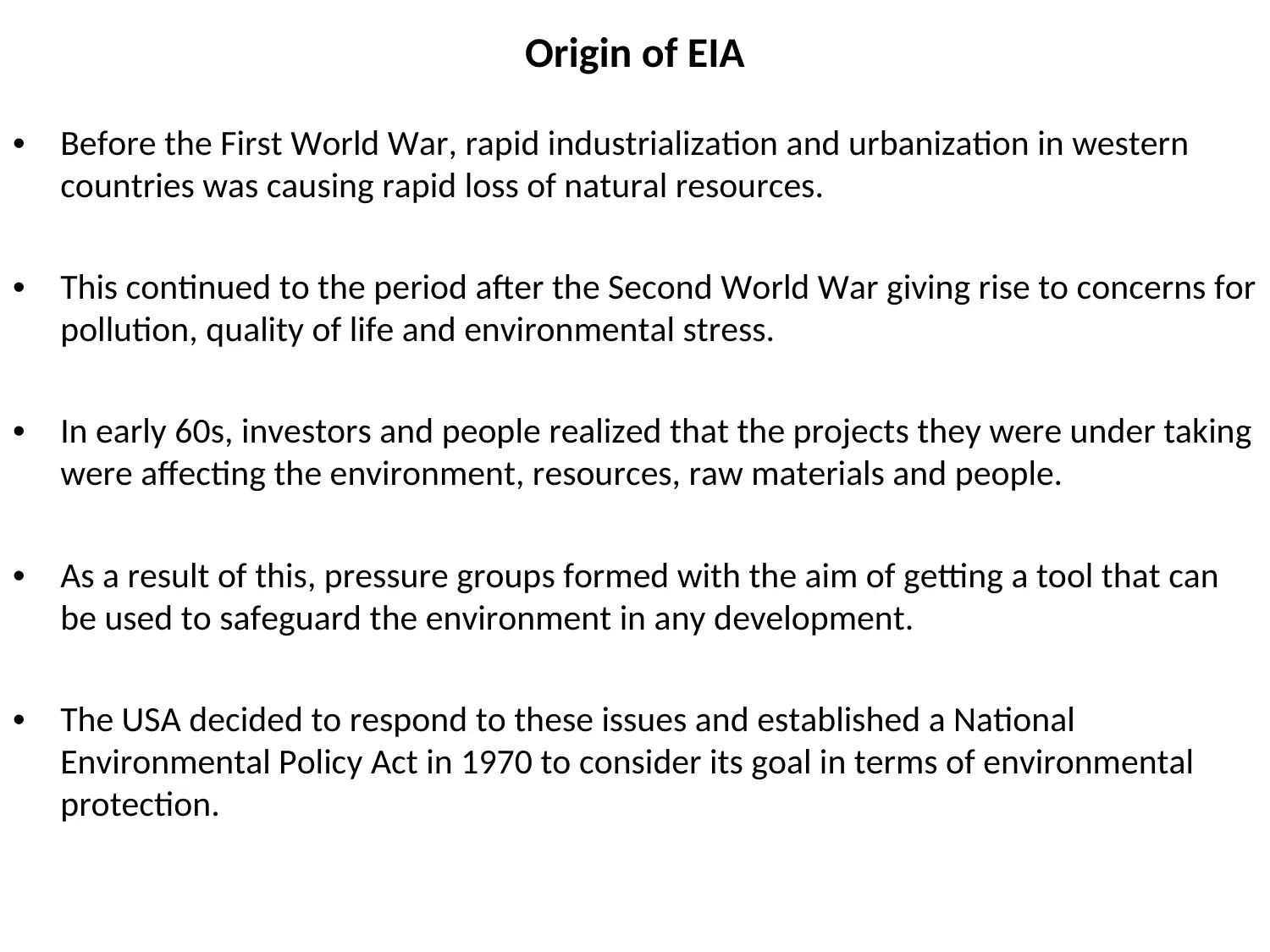

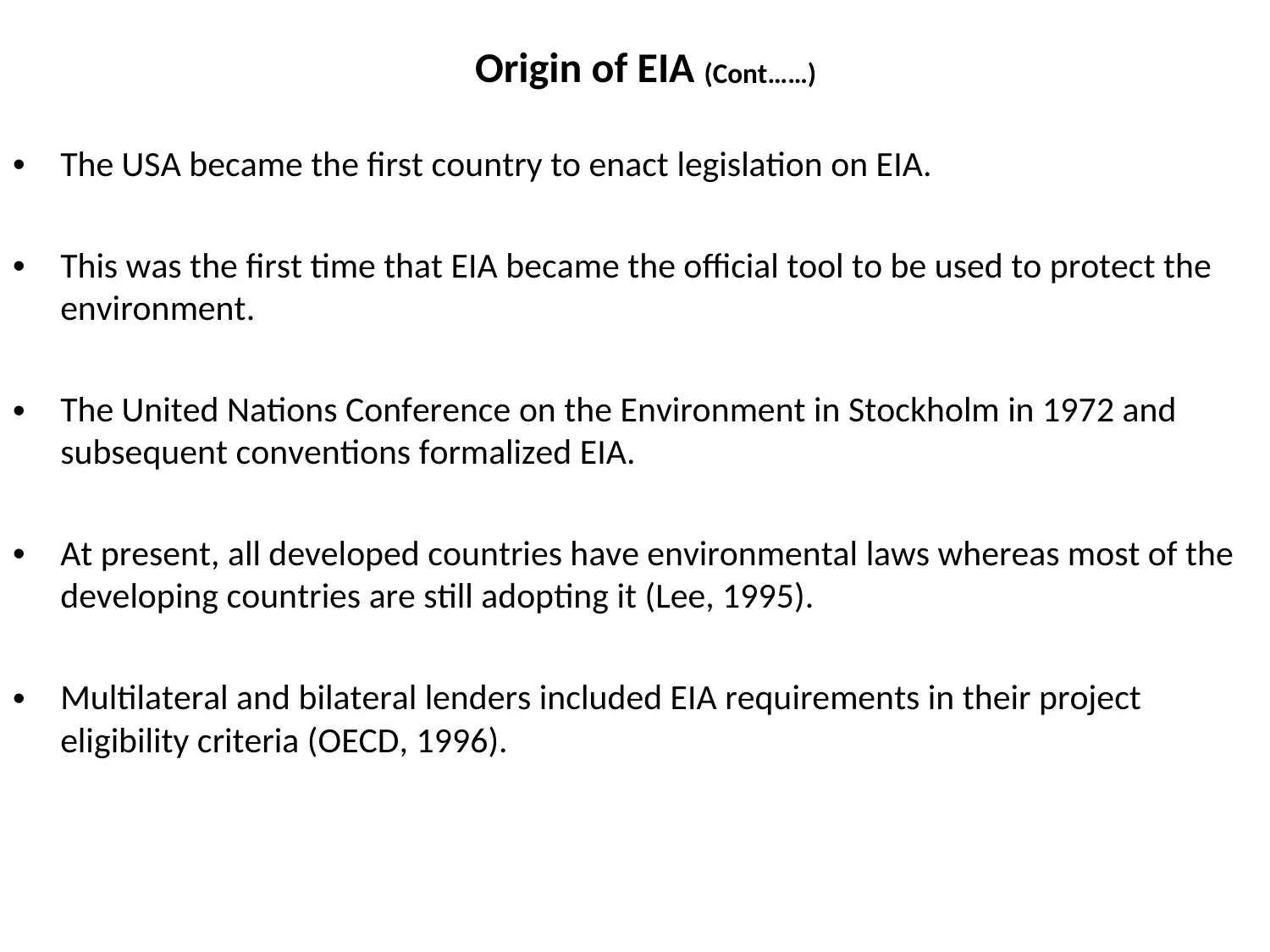
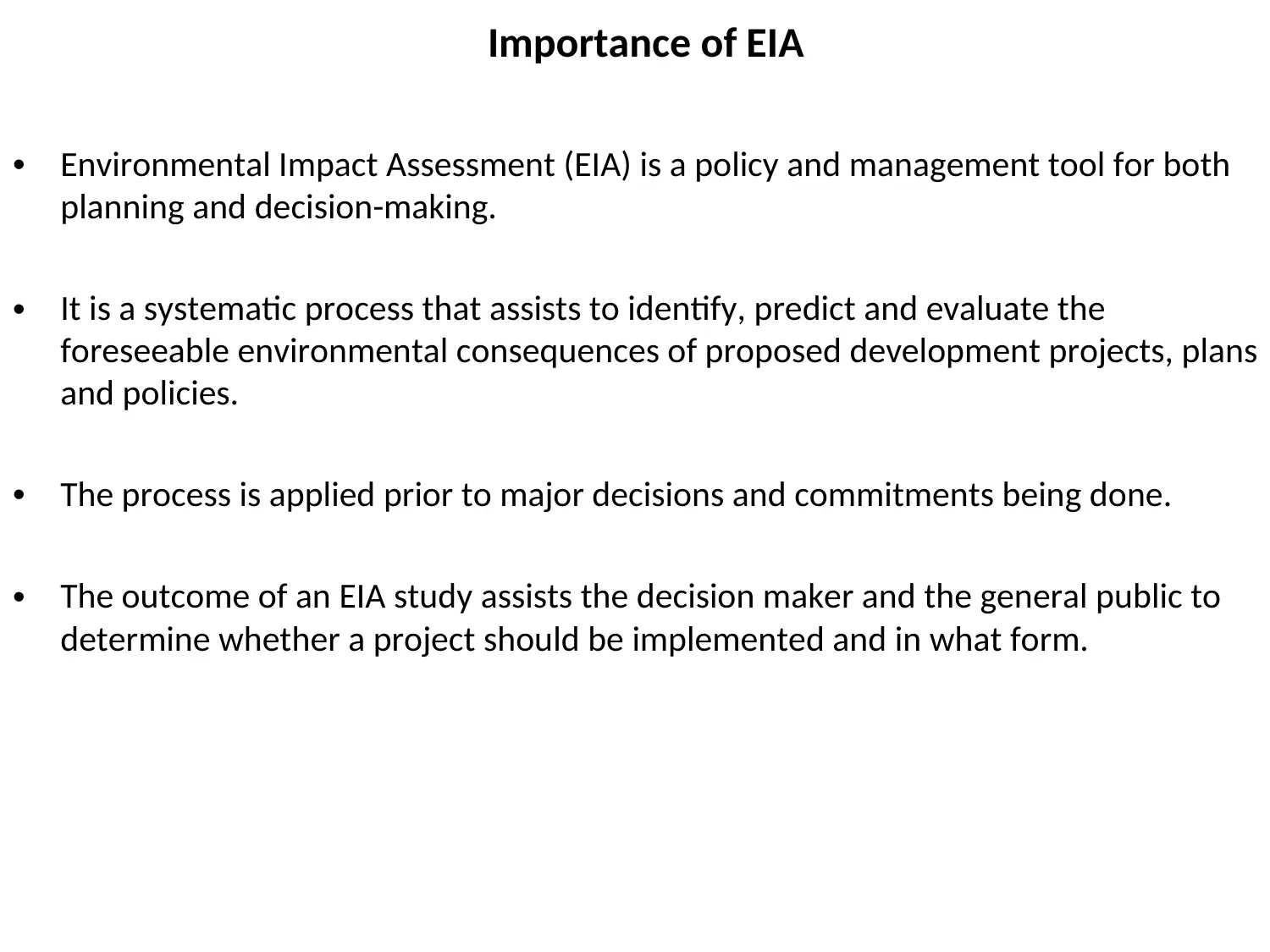
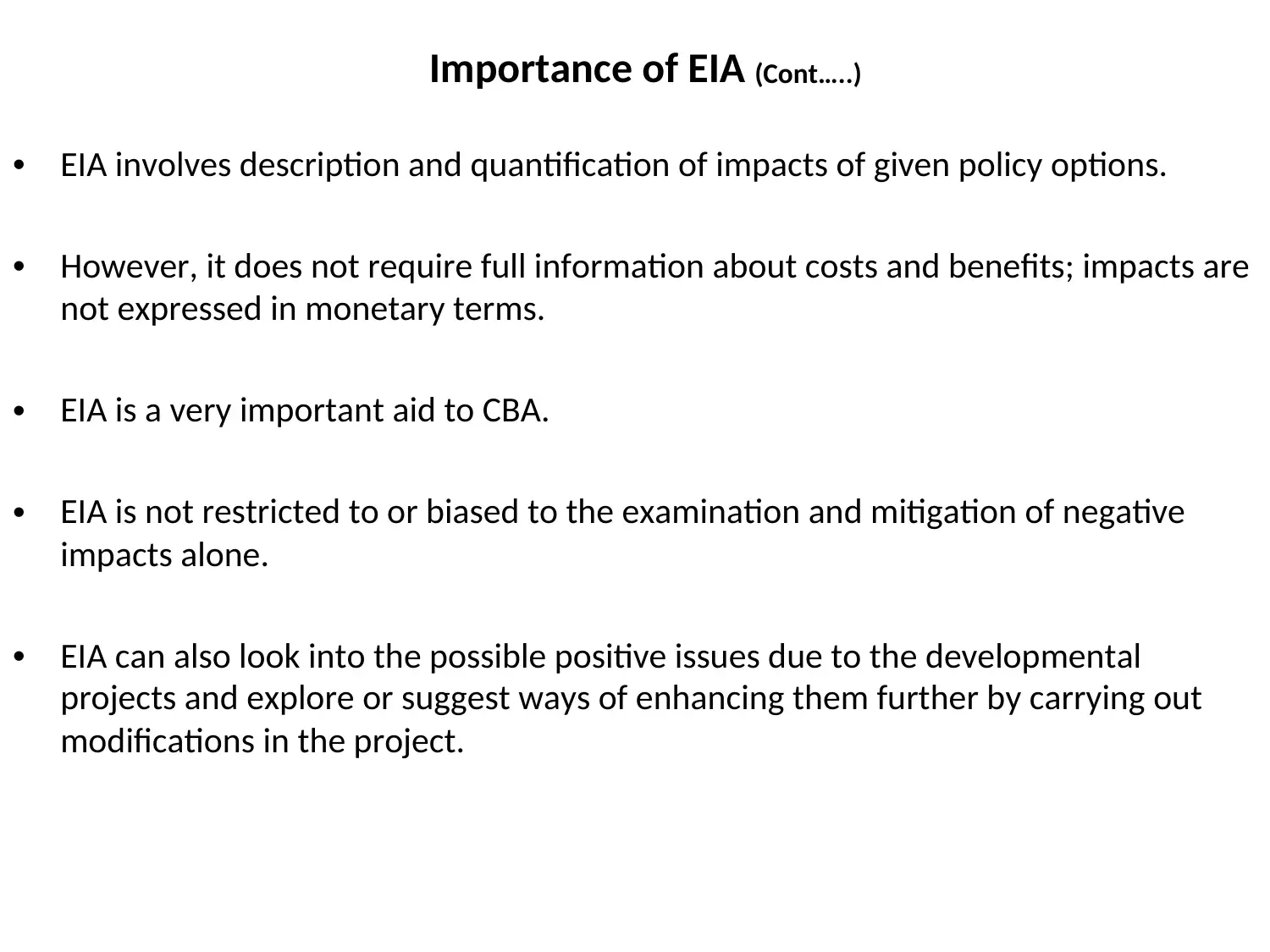
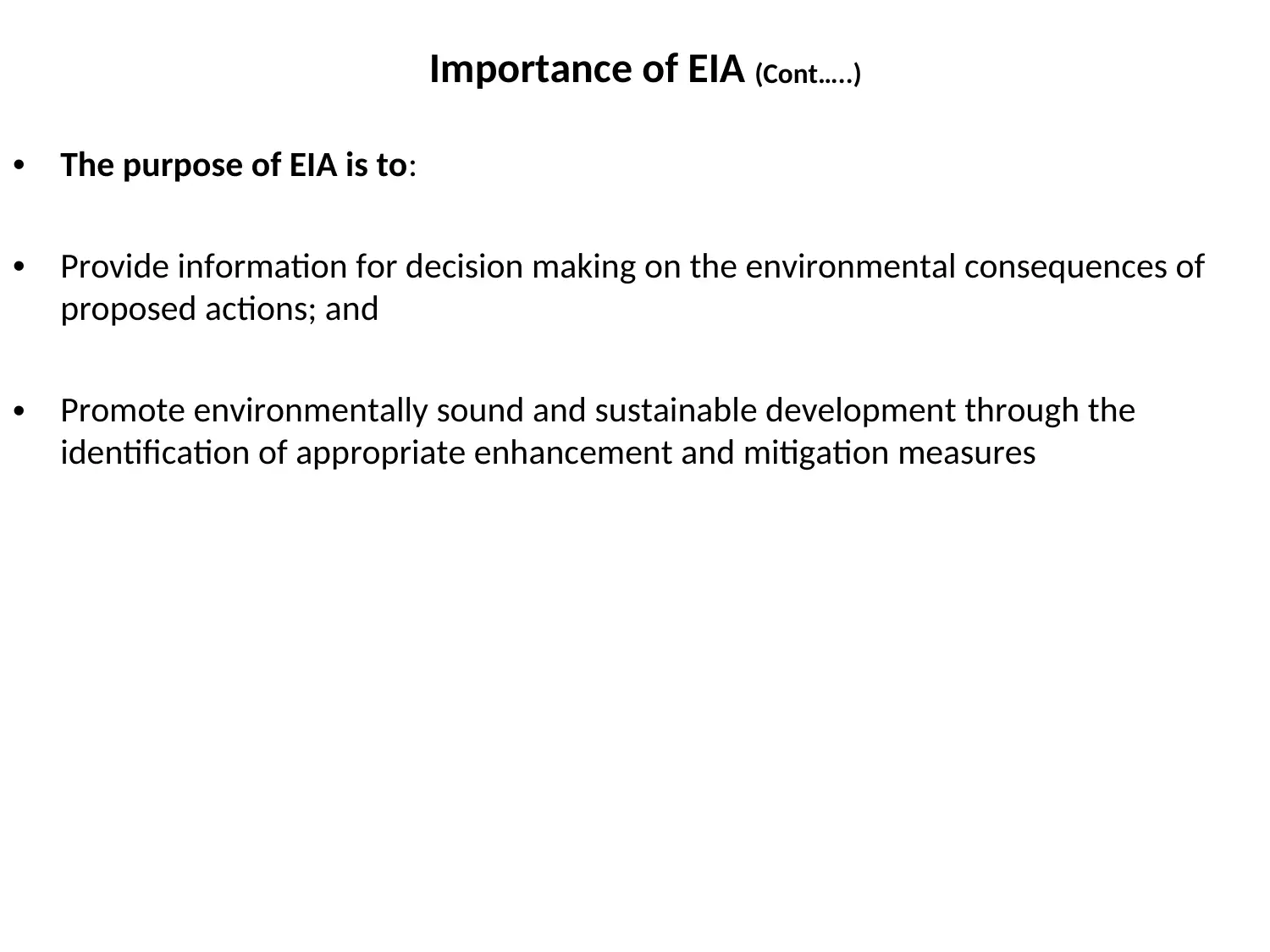
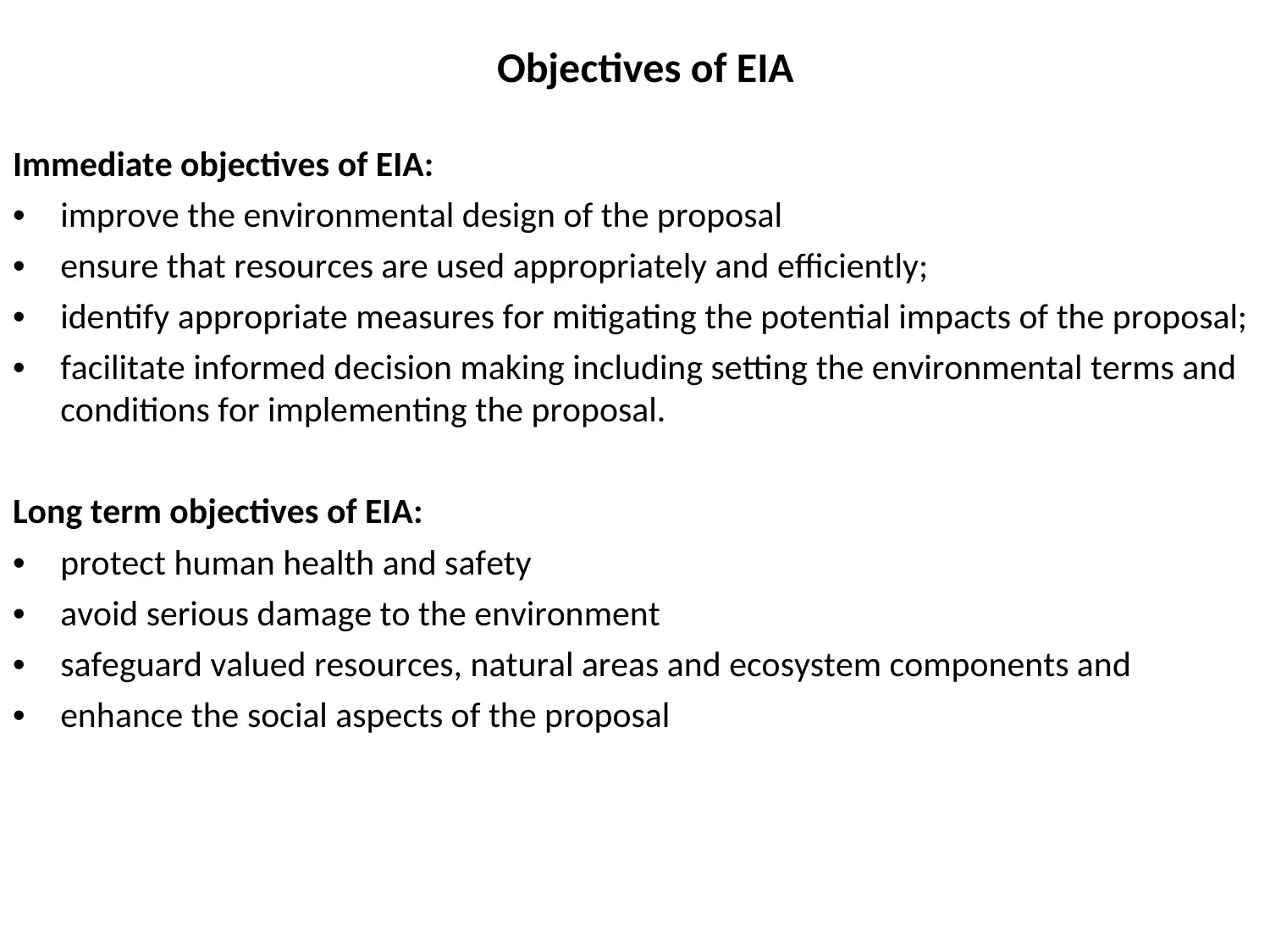
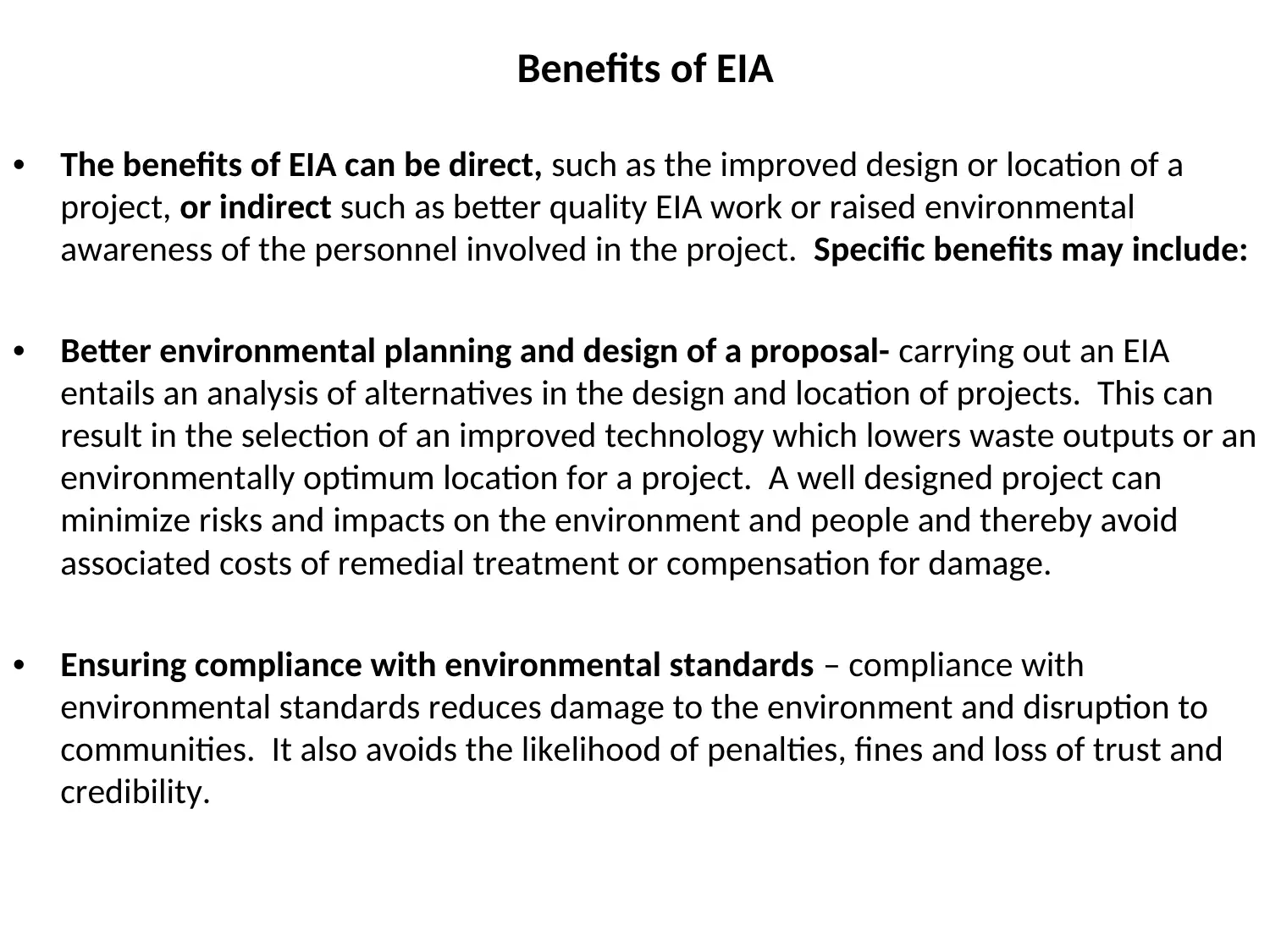
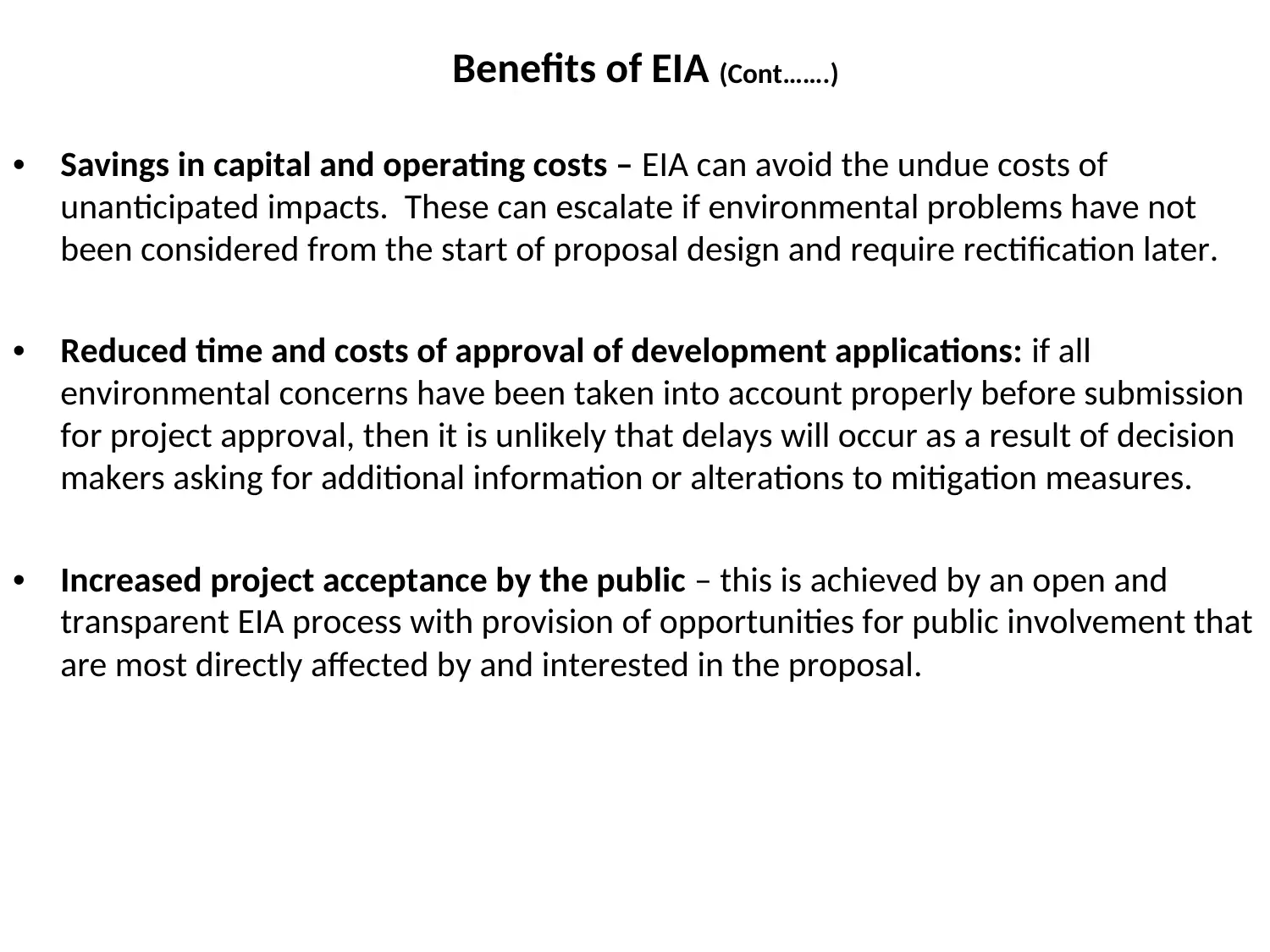
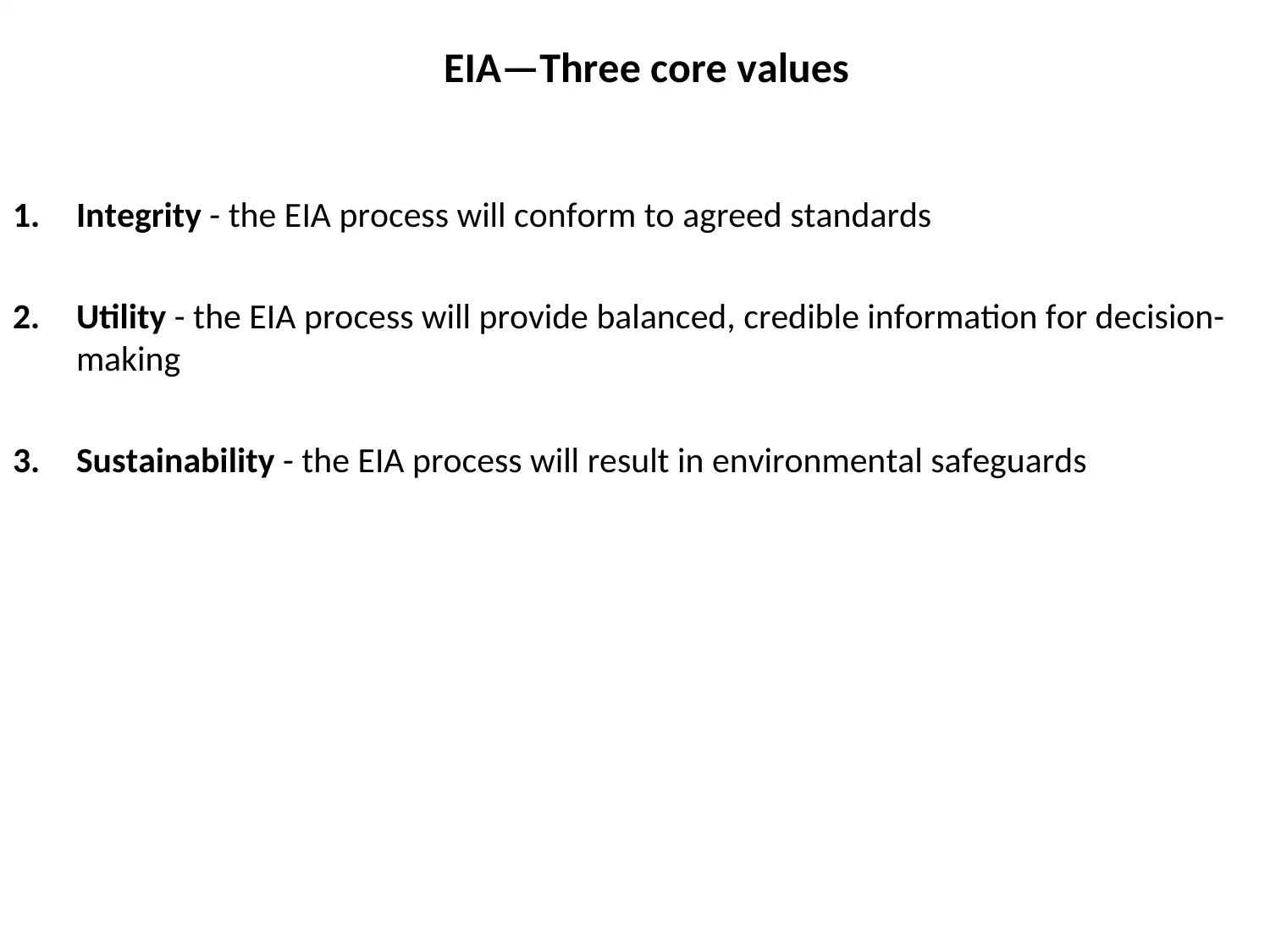
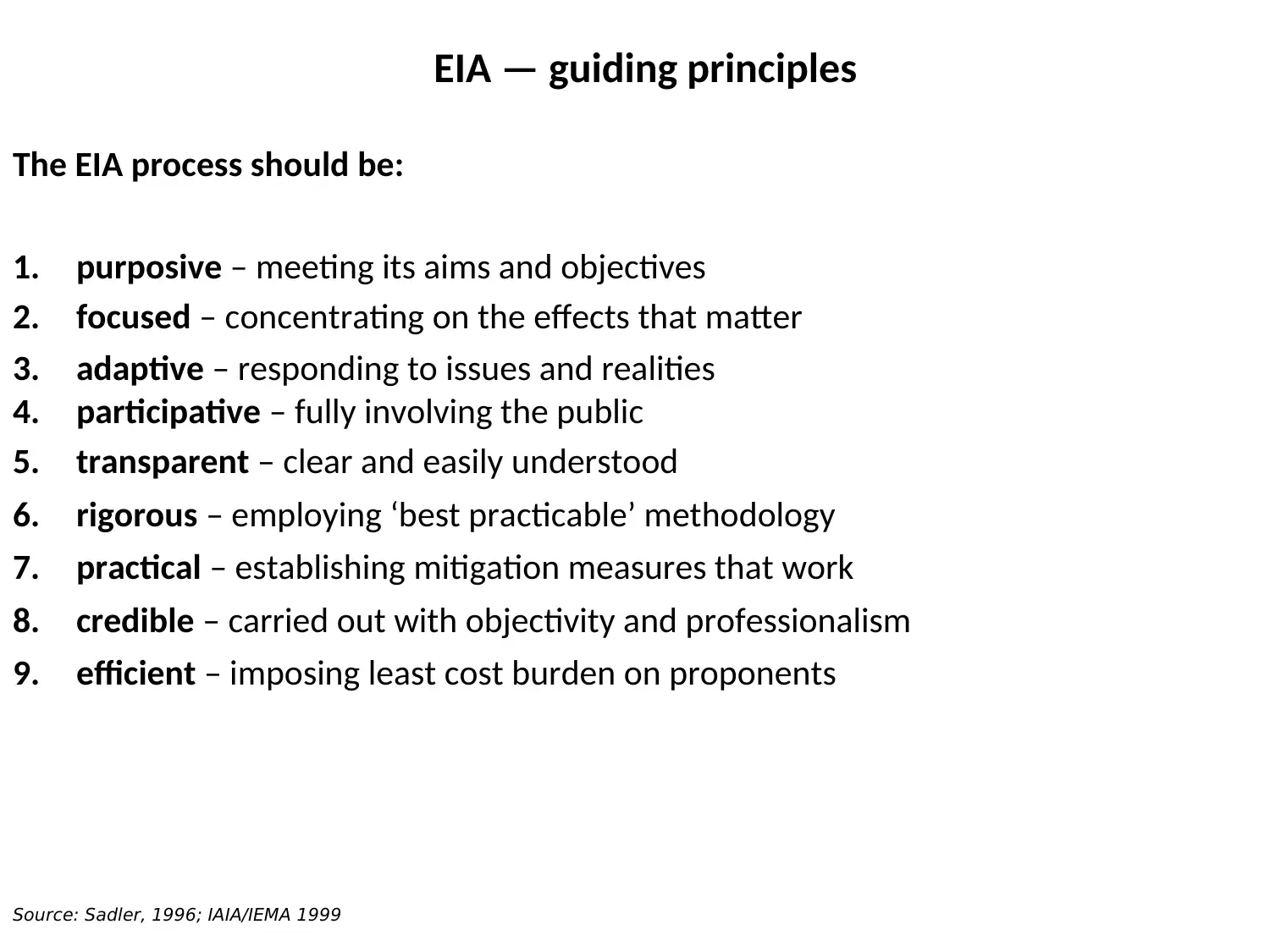






![[object Object]](/_next/static/media/star-bottom.7253800d.svg)